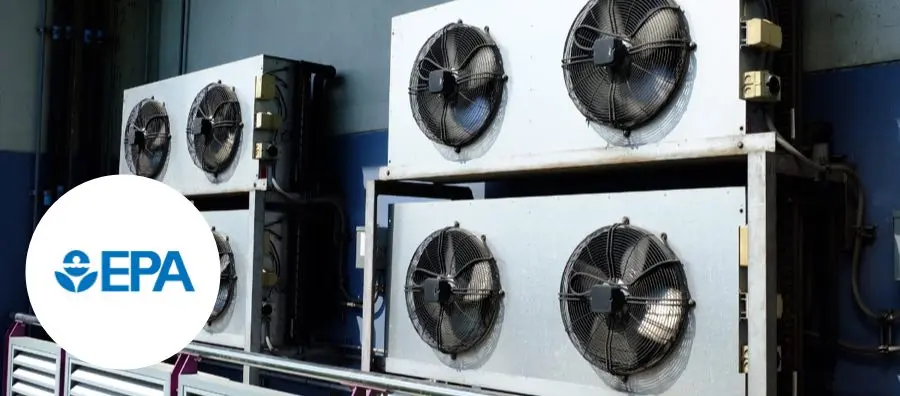
Trakref
EU Taxonomy Impact on HVAC/R Pros

There has been an increased focus on environmental objectives and environmentally sustainable economic activities in the business world. Climate change mitigation, sustainable finance, and sustainable investment used to be something that was only talked about in the realm of idealists.
Now, though, showing how your company is ready for climate change adaptation is mainstream. In the US, we are seeing this with the SEC moving forward on rule making to make climate disclosures mandatory and the California senate passing SB 260 to make information about Scope 1, 2, and 3 emissions required.
In the EU, we are seeing something similar. The European Union has the European Commission, which has been working on an EU Taxonomy for Sustainable Activities. The EU goes beyond making climate disclosures required – it looks to create a classification system to define what exactly sustainable activities are.
Why We Need This
Creating taxonomy objectives is crucial because many companies making a substantial contribution to pollution that could be working on pollution prevention are not working off of the same definitions of what a sustainable activity is. The EU realized that financial market participants all had their own idea of what environmentally sustainable activities are. This not only creates confusion for investors and other stakeholders, but does not help us reach climate goals.
The EU Commission specifically points to the European Green Deal as why this taxonomy is needed. To meet its goals by 2030, specific definitions that everyone can agree to are needed.
The taxonomy was created in 2020 during the COVID-19 pandemic. The pandemic showed that companies need to be resilient to shocks from the natural world that are beyond our expectations. While COVID wasn’t expected, though, climate change is. Reports like IPCC’s Sixth Assessment Report show that some elements of climate change are inevitable. Recognizing this, the EU decided that as part of their green transition, they needed to create a way for companies to properly communicate about their sustainable activities.
The European Green Deal
The EU taxonomy comes out of the European Green Deal. This is a set of policies to reduce the amount of Carbon that the EU is putting into the atmosphere, including through HVAC, nuclear energy, and other energy sources. It includes the following goals:
- No net emissions of greenhouse gases by 2050
- Economic growth decoupled from resource use
- No person and no place left behind
Numerous proposals and adoption of policy have come out of it, but for companies operating internationally and working with ESG reporting, the EU taxonomy is one of the most important elements to pay attention to.
Environmentally Sustainable Economic Activities
The EU taxonomy creates a number of definitions – you can read the full text of the taxonomy here.
The most important definition in the text, though, is “environmentally sustainable economic activities.” An environmentally sustainable economic activity must meet the following criteria:
- contributes substantially to one or more of the environmental objectives set out in Article 9 in accordance with Articles 10 to 16;
- does not significantly harm any of the environmental objectives set out in Article 9 in accordance with Article 17;
- is carried out in compliance with the minimum safeguards laid down in Article 18; and
- complies with technical screening criteria that have been established by the Commission in accordance with Article 10(3), 11(3), 12(2), 13(2), 14(2) or 15(2).
Here’s a breakdown of what some of these articles mean:
Article 9
Article 9 specifically defines what an environmental objective is. It must relate to climate change mitigation; climate change adaptation; the sustainable use and protection of water and marine resources; the transition to a circular economy; pollution prevention and control; or the protection and restoration of biodiversity and ecosystems.
Article 17
Article 17 defines what is considered to significantly harm the environment. This includes activities that lead to significant greenhouse gas emissions, and where an activity leads to an increased adverse impact of the current climate and the expected future climate, on the activity itself or on people, nature or assets.
Economic activities are also measured considering the production, use and end of life of products and services.
Article 18
Article 18 sets out definitions for what minimum safeguards are. These must align with OECD Guidelines for Multinational Enterprises and the UN Guiding Principles on Business and Human Rights, including the principles and rights set out in the eight fundamental conventions identified in the Declaration of the International Labour Organisation on Fundamental Principles and Rights at Work and the International Bill of Human Rights.
It must also follow the principal of “do no significant harm” in the Regulation (EU) 2019/2088. This is linked to the idea of disclosures of principal adverse impacts of investment decisions on sustainability factors. Financial disclosures should explain how adverse impacts have been taken into account.
Technical Screening Criteria
In addition to these specific definitions for what is considered environmentally sustainable, the EU taxonomy under the European parliament creates technical screening criteria through the first delegated act. The first delegated act was published in 2021, and another one is on the way in 2022 which will provide more updates and remaining objectives.
These technical screening criteria fall under six environmental objectives:
- Climate change mitigation
- Climate change adaptation
- The sustainable use and protection of water and marine resources
- The transition to a circular economy
- Pollution prevention and control
- The protection and restoration of biodiversity and ecosystems
Specific Refrigeration Regulations
Under these technical screening materials, the first delegated act mentions refrigeration specifically in the context of the installation of electric heat pumps. For these, GWP cannot exceed 675, and equipment must be prepared for climate change adaptation.
Electric heat pumps must also be able to transition to a circular economy. As the delegated act states, “The activity [must assess] availability of and, where feasible, uses equipment and components of high durability and recyclability and that are easy to dismantle and refurbish.”
They must also follow specific pollution prevention measures. For air to air heat pumps with rated capacity of 12 kW or below, indoor and outdoor sound power levels must be below the threshold set out in Commission Regulation (EU) No 206/2012, which follows IPCC standards.
Looking globally
The EU taxonomy for sustainable activities is a fantastic way to begin to standardize transitional activities and capital expenditure when it comes to climate. Finding ways to meet energy targets and substantially contribute to keeping our planet safe is important for policy makers and those in the HVAC/R industry to consider.
It’s true that Trakref is a US-based company, and most of our clients are based in the US. That doesn’t stop us from looking globally, though. We know that the social objectives happening abroad are important to pay attention to. Not only do many of our clients operate internationally, but what happens on a global scale will ultimately come to the US.
While we don’t have our own taxonomy in the US, we are seeing moves to make reporting more standardized through California’s SB 260 and the SEC’s latest rule making. It wouldn’t be surprising that, alongside EU’s climate initiative, we see more pressure to create appropriate definitions for disclosure requirements here.
Trakref’s Asset Taxonomy
Seeing that the EU formally adopted this common language around sustainability was actually an affirming moment for Trakref. For years, we’ve been advocating for better language and understanding of what is considered sustainable. In fact, we have our own asset taxonomy we use as we work with clients. While it isn’t exactly the same as the EU taxonomy for sustainable activities, it does seek to create a common classification system and provide companies with an understanding of their maintenance maturity.
Asset classification
Our asset taxonomy begins with evaluating the types of assets a company is working with and organizing them into three discreet tiers:
- Tier I assets include HVAC, refrigeration, water, energy, and fire suppression. These require major compliance undertakings.
- Tier 2 assets include lighting, vertical lift, cart repair, and other important assets that require some compliance, but not as much as Tier 1
- Tier 3 assets include landscaping, roofing, parking lots and other assets where no compliance is required.
Asset utilization
Once we consider asset classification, we look at how assets are actually being used. These include budget, asset registry, quantity of assets, drivers, risk, engagement, and policy development.
Environmental goals
From here, we look at a company’s environmental goals. We consider if sustainability goals have been defined, whether there is an expert group working on ESG reports, and how compliance risks are being assessed. We also look at governance and whether there are proper processes in place to deal with upcoming events in sustainability.
Maintenance Maturity
Once we analyze all these elements, we place a company on one of four maintenance maturity levels:
- Reactive – sustainability is not auditable, compliance is low, and the company is just responding to issues as they arise
- Preventative – sustainability quality is still low. Compliance is better, but still not fully mature
- Predictive – compliance is achieved. Sustainability is high – the company is setting goals and meeting some of them
- Reliability-centered maintenance – the company is reporting on ESG and meeting goals. Compliance is achieved 100% of the time.
Using this taxonomy allows us to define goals with a client and help them work their way up to reliability-centered maintenance. Many companies that work with us are not there at the beginning of their journey – but with the proper tracking, technology, and governance, it is achievable.
We’re Ready for the EU Taxonomy
At Trakref, we’ve been looking globally for years, which is why we’ve built out our own asset taxonomy. This has made it easy to adjust to the EU taxonomy. The EU is thinking about assets just like we are.
Many of the definitions from the EU Taxonomy for Sustainable Activities are ones we’ve been using for years. They’re baked into the way that Trakref works to help companies achieve the maintenance maturity that we have always believed is possible. Governments are beginning to standardize, but we’ve been advocating for this for years.



